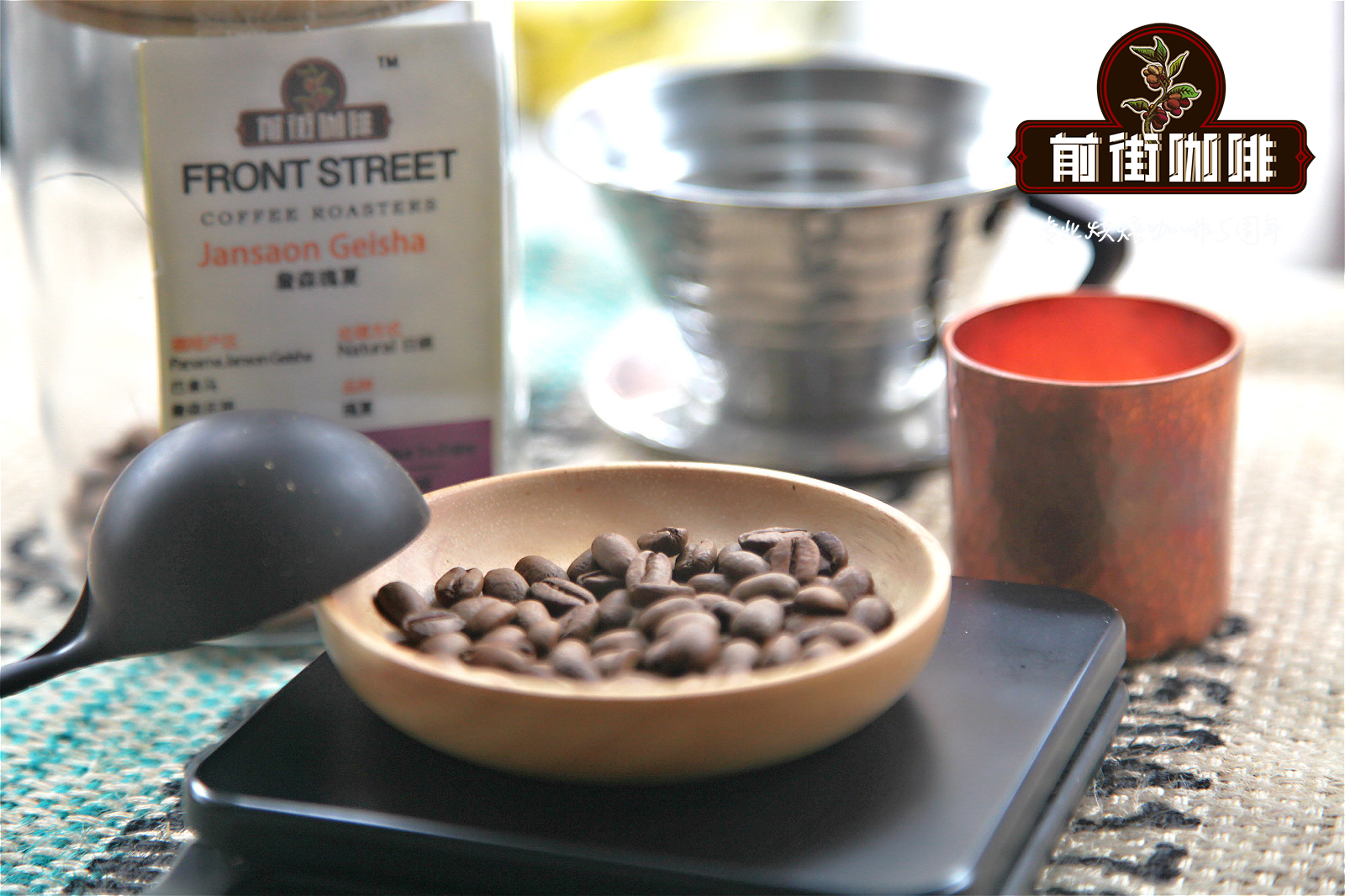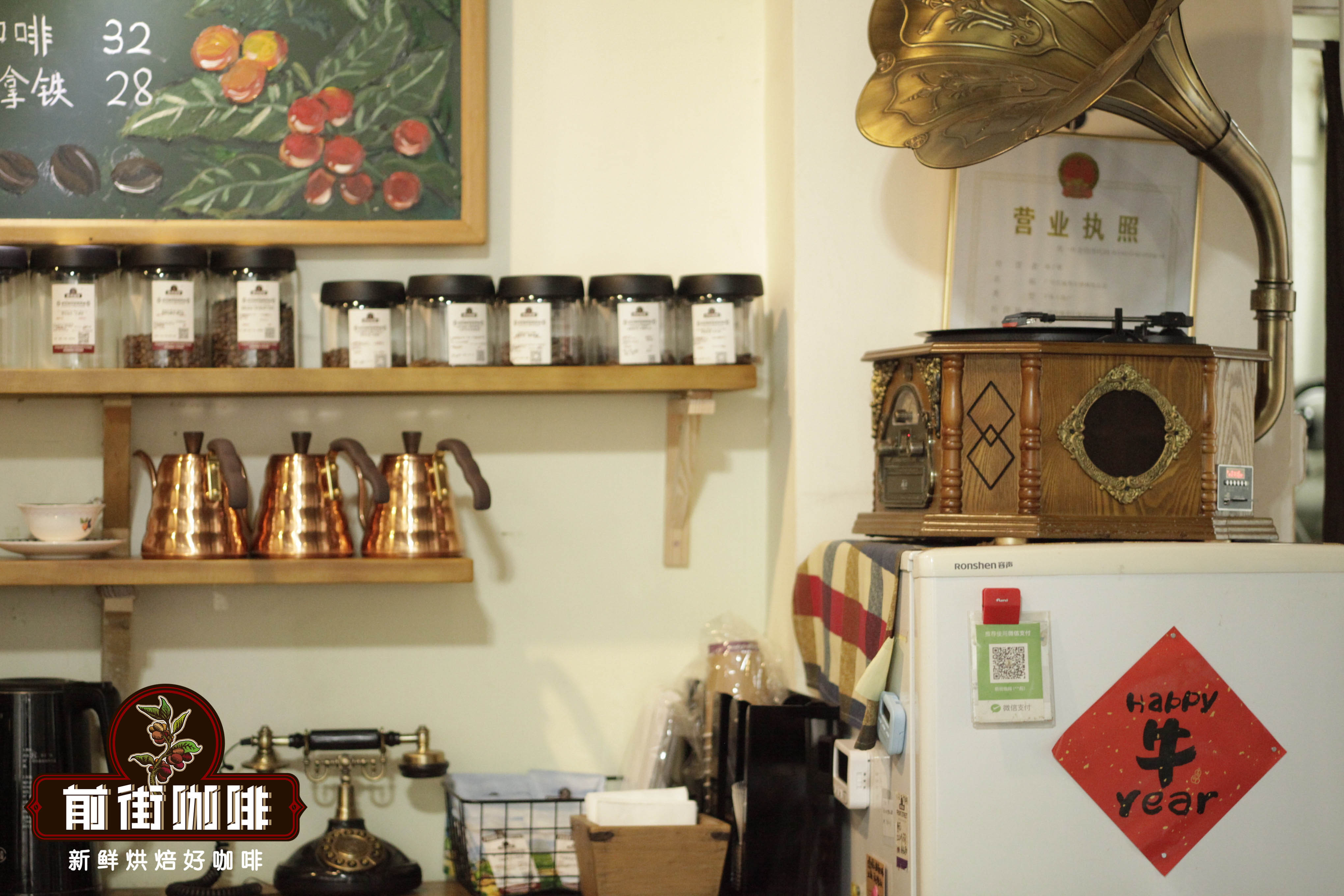Columbia Emerald Manor Ice hand Coffee making method _ how to drink Colombian hand Coffee

Professional coffee knowledge exchange more coffee bean information please follow the coffee workshop (Wechat official account cafe_style)
Colombia, located in the northwest of South America, is a beautiful country with a long history. Indians have lived on this land since ancient times. It was colonized by Spain in 1531 and gained independence in 1819. It was renamed in 1886 to commemorate Columbus, the discoverer of the American continent.
Colombia has beautiful mountains and rivers, beautiful scenery, pleasant climate, spring all year round and fresh air. Colombia is rich in products, especially coffee, flowers, gold and emeralds are known as the "four treasures". Today, the country is the second largest coffee producer after Brazil, the world's largest exporter of Arabica coffee beans and the world's largest exporter of washed coffee beans.
Colombian coffee is often described as silky and smooth. Of all the coffees, it is the most balanced, soft, smooth and ready to drink, and it has won praise that no other coffee can match: known as "green gold".
Before the 1990s, Colombia became synonymous with the protection of drug lords because of political instability in the country and the proliferation of drug cultivation. Especially after the rendering of Hollywood movies, it seems that Colombia and the Golden Triangle of Southeast Asia are in the same position.
In fact, in the era of Greater Columbia, half of South America was ruled by Colombia, and its culture and history were closely related to coffee.
01 | planting history in Colombia
The history of coffee cultivation in Colombia can be traced back to the Spanish colonial era in the 16th century, and there are many theories about the history of coffee in Colombia:
One: it is said to come from the sea island of the Caribbean and from El Salvador in Central America.
Second: in 1808, a priest introduced coffee beans to Colombia for the first time from the French Antilles via Venezuela. One of them is that Colombia's first coffee seeds were imported from Venezuela through the province of Santander.
Third: the earliest records of coffee cultivation in Colombia appear in the book "The IllustratedOrinoca" written by Jose Gumilla, a Spanish missionary. He describes what he saw when he preached on both sides of the Meta River in 1730, in which he mentioned the local coffee plantation. By 1787, other missionaries had spread coffee to other parts of Colombia.
02 | main types of coffee
We all know that the two main categories of coffee, Arabica (Arabica) and Robusta (Robusta), like two races of different faiths, have always been incompatible with each other. The varieties of Colombian coffee are mainly small-grain coffee in Arabica, such as Caturra (Kaddura), Bourbon (Bourbon), Catuai (Kaduai), typica (iron pickup) and Columbia (Colombia). Other varieties are also grown in a small number of areas.
The plants of these Colombian coffee are usually small trees, and the plant height is often trimmed to more than one person's height, making it easy for manual picking. Coffee flowers bloom season, Cymes several clusters in leaf axils, each inflorescence has 2-5 flowers, no total pedicel or with a very short total pedicel; coffee flowers are fragrant, very much like jasmine or gardenia, normal varieties of coffee fruit oval, peel is red. After variation under specific conditions, a few varieties produce yellow fruit, and then after seed screening, they become some branch varieties separately. Such as Yellow Bourbon (yellow bourbon), Pink Bourbon (pink bourbon) and so on.
It is worth mentioning that the Columbia breed here is actually the Catimo (Katim) rejected by many people in the coffee industry. Because of its high yield and strong disease resistance, it has gradually become the main force of Colombian coffee in recent years.
Many people who first know coffee in the accident often put too much emphasis on the variety of coffee, which is actually unscientific. The flavor of a cup of coffee is based on the coffee bean itself. The coffee bean itself is not the only element of the variety, its growth environment and treatment will also affect the taste of the coffee into the cup.
03 | Coffee growing environment
The suitable climate in Colombia provides a real garden of Eden for coffee. Coffee trees in Colombia are mainly cultivated on steep slopes of about 1300 meters above sea level in the Andes, latitude 1 °- 11 °15 N and longitude 72 °- 78 °W, where the annual average temperature is about 18 ℃, annual rainfall is 2000 to 3000 mm, and the specific range of elevation can exceed 2000 meters. The natural combination of these characteristics, the Colombian Coffee growers Association scientifically guides coffee growers to plant, pick and treat. Created high-quality Colombian coffee.
In Colombia, coffee cultivation has reached 1.07 million hectares, there are about 302000 coffee plantations in the country, and 30 to 40 per cent of the rural population depends directly on coffee production. Although there are many farms in Colombia, they are not large in area. The area of each farm is only about 2 hectares, and more than 80% of the coffee plantations have only about 5000 coffee trees, an average of 3000. The locals plant tall mango trees, banana trees or other trees with broad crowns around the coffee trees, and even build shade sheds during the coffee seedling stage to ensure the cool and humid environment needed for coffee growth. In the coffee growing area of Colombia, due to the high humidity and small temperature difference in the coffee forest, coffee beans mature slowly, which is conducive to the accumulation of caffeine and aromatic substances.
Coffee fruit ripening season, coffee farmers lead mules up the mountain to manually pick coffee bean fruit (also known as coffee cherry), manual screening of the picked fruit, careful selection, pick the most mature and full fruit. The vast majority of Colombian coffee beans are water-washed and moderately roasted with a light silky taste and sometimes with a touch of green apple acidity. Therefore, the image of coffee farmer Uncle Juan holding a mule to pull coffee fruit has become the image of Colombia's external promotion.
04 | quality and grade
No matter in terms of yield or texture, Colombian coffee is the first Medellin producing area, which is characterized by full granules, rich nutrition, moderate acidity, good balance, rich aroma and soft taste. In addition to Medellin, the provincial capitals of the two neighboring provinces in the south, Armenia and Manizales, are also famous coffee producers.
Columbia beans take the SUPERMO as the highest grade, followed by the EXCELSO, but only the selected coffee with more than 18 mesh beans can be included in the selection. At present, many small estates of micro-batches of coffee on the market, with fine processing and low yield, are organized to participate in the bean evaluation competition organized by the Colombian Coffee growers Association every year, thus gaining a higher market value. Like pink girls, like Mercedes Manor Kaddura.
05 | Flavor
If the coffee in the world is classified according to its flavor, it can be divided into two categories: one is the "hard" coffee represented by Brazil, which is mellow, and the other is the "soft" coffee represented by Colombia, which is light and elegant.
Each kind of caffeine has its own strong flavor characteristics because of its different varieties, producing areas and treatment methods. Like a person's character, masculine Manning, has a character similar to the iron and steel man; mellow fragrant Blue Mountain Coffee is a gentle and beautiful woman. Colombian coffee, on the other hand, is most suitable for those who are casual and fond of light. Although drinking coffee does not have to be as formal as a religion and look for an esoteric philosophy of life between sour, sweet and bitter, you can also get rich sensory experience and inner peace and satisfaction after simply drinking a cup of warm coffee. Colombian coffee silk generally smooth taste, bright high-quality acidity, first sour then sweet, bitter shallow fragrance for a long time, rich and thick, memorable, instantly make people feel the sweetness and temperature of life
06 | Export management
The export management of the coffee trade in Colombia is mainly the responsibility of the Colombian Coffee Growers Association. It is an unofficial industry organization with several government ministers serving on the committee. Colombian law clearly stipulates that only private businessmen holding the association's license can export coffee, in order to maintain the image of Colombian coffee in the world, but also to ensure that the government receives stable revenue in the coffee trade.
At present, the association is actively promoting Colombian coffee products and cultural image in Greater China. Its representative office is located in Shanghai, and the person in charge is Mr. Wu Jiahang, a Chinese man who has lived in Colombia for a long time.
07 | Coffee culture
The things Colombians like to talk about most are probably football, coffee and beauty. In fact, people in many coffee-producing countries in the world do not drink much coffee. Colombia is an exception. In cities such as Bogota, drinking coffee is a daily leisure life for local people. The streets are full of cafes, and customers are full of seats from morning till night.
At the University of Andean, there is a small card in every office that says "Coffee time". If the host is temporarily out, it is likely to be hung at the door. This seems to be a legitimate reason, even for executives who are on duty. At any restaurant in Medellin, the free drink served by the clerk is coffee.
Coffee is so popular in Colombia that coffee is an indispensable writing material in many of the works of the famous Colombian writer Garcia M á rquez, who won the Nobel Prize for literature. coffee is described in almost every chapter of "A hundred years of Solitude", which won him the Nobel Prize for Literature. In the Colonel No one wrote to him, which is said to be Garcia M á rquez's favorite novel, he portrays the image of a poor retired officer. Readers can feel this embarrassment from the very beginning. "the colonel opened the coffee box and found that there was only a small spoonful of coffee left."
In the era of Starbucks sweeping the world, coffee carries a strong export of American culture, while it is said that there is no Starbucks in the Spanish-speaking countries to the south of Mexico. However, the Colombian coffee brand chain of "JUAN VALDEZ" and the extremely eye-catching mule carry coffee logo almost spread to large and medium-sized cities in South America.
How to make Colombian Coffee [Emerald Manor]?
Qianjie Coffee hand reference: weigh 15g [Emerald Manor] coffee powder, pour into the grinder for medium grinding, the finished particles are slightly thicker than salt, we use BG bean grinder to scale 5R (standard sieve pass rate 60%), water temperature 89 degrees, V60 filter cup extraction, recommended powder / water ratio around 1:15.
The hot water in the hand flushing pot draws a circle clockwise with the center of the filter cup. Start the time when brewing, brew the coffee to 30g in 15 seconds, then stop the water injection, and when the time is up to 1 minute, the second water injection. The second water injection is the same as before, draw a circle clockwise with the center of the filter cup, and the water flow should not rush to the place where the coffee powder is connected with the filter paper, so as not to produce channel effect.
Coffee powder to the outermost circle to set aside a circle, and then another circle to the middle, 2 minutes 20 seconds, to the coffee to 220g, brewing coffee is finished.
| Japanese Ice hand Chong [Emerald Manor]
Qianjie Coffee Ice hand Chong [Emerald Manor] reference:
Colombian Coffee [Emerald Manor], light and medium roasted, BG bean grinder scale 5m (standard sieve pass rate 67%)
20 grams of powder, 150 grams of ice, 150 grams of hot water. The water temperature is 90 ℃ higher than the recommended normal hand flush, then 1 ℃ higher, the normal grinding small Fuji 3.5 scale, the ice hand flushing is slightly smaller than half a grid-small Fuji 3 scale, the recommended powder (water + ice) ratio is 1:15.
The amount of steaming water is 40 grams and the steaming time is 30 seconds.
Water injection by stages, 60 grams of water in the first section and 40 grams of water in the second section. Use a thin but high water injection column and stir hard to make the coffee powder fully tumble, but be careful that the water level is not too high and do not rush to the edge of the filter paper.
The whole extraction time is about two and a half minutes (close to the normal extraction time of 20 grams of powder).
END
Important Notice :
前街咖啡 FrontStreet Coffee has moved to new addredd:
FrontStreet Coffee Address: 315,Donghua East Road,GuangZhou
Tel:020 38364473
- Prev

Columbia Huilan pink bourbon hand-brewed parameter coffee how to drink pink bourbon coffee characteristic flavor
Professional coffee knowledge exchange more coffee bean information please follow Coffee Workshop (Wechat official account cafe_style) Colombian Coffee-Pink bourbon, which was first discovered by coffee farmer Rodrigo Sanchez in Vera, Colombia. As the name implies, the pink bourbon fruit is pink after ripening, which is a variety of red bourbon and yellow bourbon. Pink bourbon is an extremely rare
- Next

Colombia Montevideo Estate Coffee Bean Hand Brewing Method Tolima Region Coffee Flavors
Professional coffee knowledge exchange More coffee bean information, please pay attention to coffee workshop (Weixin Official Accounts cafe_style) Colombia coffee-Tolima Montevi Manor Wushwush sun custom batch ColombiaTolimaLasMercedesFincaMo
Related
- Detailed explanation of Jadeite planting Land in Panamanian Jadeite Manor introduction to the grading system of Jadeite competitive bidding, Red bid, Green bid and Rose Summer
- Story of Coffee planting in Brenka region of Costa Rica Stonehenge Manor anaerobic heavy honey treatment of flavor mouth
- What's on the barrel of Blue Mountain Coffee beans?
- Can American coffee also pull flowers? How to use hot American style to pull out a good-looking pattern?
- Can you make a cold extract with coffee beans? What is the right proportion for cold-extracted coffee formula?
- Indonesian PWN Gold Mandrine Coffee Origin Features Flavor How to Chong? Mandolin coffee is American.
- A brief introduction to the flavor characteristics of Brazilian yellow bourbon coffee beans
- What is the effect of different water quality on the flavor of cold-extracted coffee? What kind of water is best for brewing coffee?
- Why do you think of Rose Summer whenever you mention Panamanian coffee?
- Introduction to the characteristics of authentic blue mountain coffee bean producing areas? What is the CIB Coffee Authority in Jamaica?

